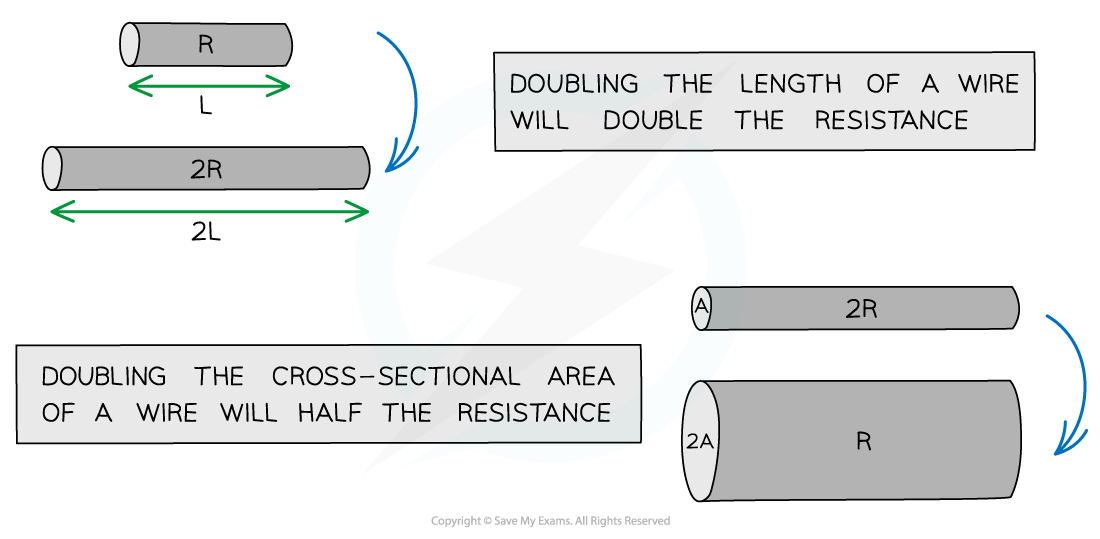Resistivity
Resistance, Length and Cross-Sectional Area
- The resistance of a sample depends on:
- The material it is made of
- The length of the sample
- The cross-sectional area of the sample
- The resistance of a conductor (e.g. a wire) is:
- Directly proportional to its length
- Inversely proportional to its cross-sectional area

How the length and width of a wire affect its resistance
Defining Resistivity
- This leads to the definition of a new quantity, called resistivity
- Resistivity is a property describing the extent to which a material opposes the flow of electric current through it
- It is defined as follows:
The resistivity of a material is equal to the resistance per unit length of a material with unit cross-sectional area
- The equation for the resistivity is:
![]()
- Where:
- ρ = resistivity in ohm-metres (Ω m)
- R = resistance in ohms (Ω)
- A = cross sectional area of material in square metres (m2)
- L = length of material in meres (m)
Resistivity of Conductors and Insulators
- Resistivity is dependent on temperature
- In conductors, the resistivity increases with increasing temperature
- In insulators, the resistivity decreases with increasing temperature
- Since ρ ∝ R, when a wire or the filament inside a lamp heat up, their resistance increases
Resistivity of some materials at room temperature

- Conductors have the lowest values of resistivity
- Wires are made from copper because of its relatively low resistivity at room temperature
- Insulators have such a high resistivity that virtually no current will flow through them
Worked example
Two electrically-conducting cylinders made from copper and aluminium respectively.
Their dimensions are shown below.

Copper resistivity = 1.7 × 10–8 Ω m
Aluminium resistivity = 2.6 × 10–8 Ω mDetermine which cylinder is a better conductor.
Exam Tip
You won’t need to memorise the value of the resistivity of any material, these will be given in the exam question. The equation for resistivity is given in the data booklet.Remember, if the cross-sectional area is a circle (e.g. in a wire), it is proportional to the diameter squared. This means if the diameter doubles, the area quadruples causing the resistance to drop by a quarter.

